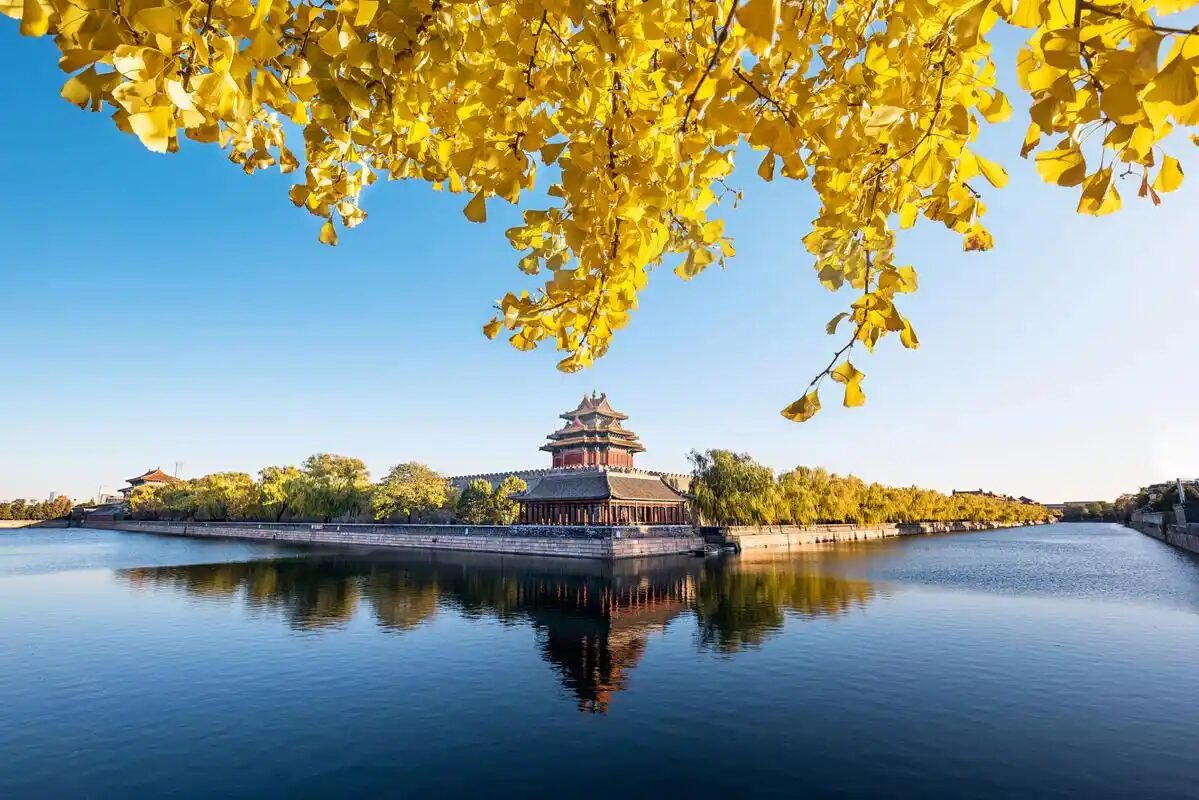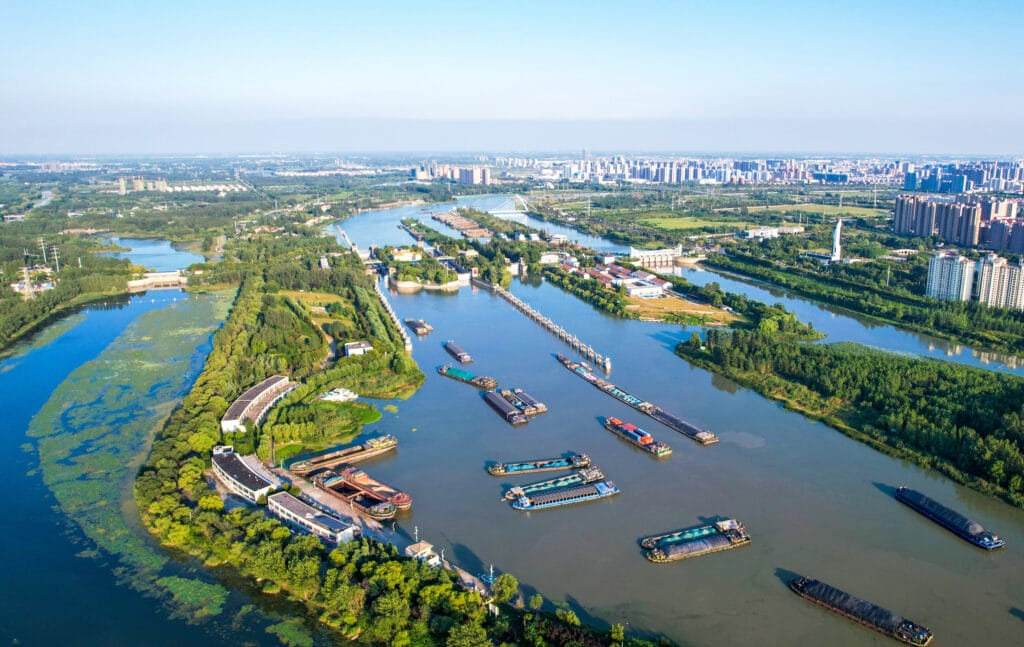Ancient Chinese civilization and modern-day innovation come together in Beijing, the capital. The city boasts scenic spots like the Great Wall of China and the Forbidden City, which serves as a historical landmark, not forgetting the delicious food markets where entertainment meets taste. Everything about Beijing is meant to be explored and enjoyed, whether you're a first-time traveller or not. You can rest assured that this article will help you get the most out of your trip by showcasing Beijing's essential attractions, cultural heritage, and insightful suggestions that will leave a lasting impression.
What to Expect from Beijing City Tours?

Top Destinations in Beijing City Tours
The Great Wall of China: Any trip to Beijing is incomplete unless one experiences the magnificence of the Great Wall. It is a worldwide marvel, with overlapping sections in Beijing like Badaling and Mutianyu being well-kept and easy to reach. The wall itself meanders over gorgeous terrain with breathtaking views of the region. These places often offer modern-day conveniences such as cable cars and walking paths, which make them accessible to every visitor.
The Forbidden City: One glance at the Forbidden City will instantly transport you to the majestic era of Beijing's imperial past. For most of its history, this expansive UNESCO World Heritage site, with its carefully crafted over 900 structures, has been home to Chinese Emperors for almost 500 years. Each portion of the structure tells a story, with its intricate design, detailed inscriptions, and prominent courtyards giving a glimpse into an everlasting royal atmosphere. Visitors can find notable places like the Imperial Garden and the Hall of Supreme Harmony.
Tiananmen Square: As one of the broadest public squares globally, Tiananmen Square represents modern-day China's history. Surrounded by iconic places like the National Museum of China, Monument To The People's Heroes, and Tiananmen Gate, the square serves as a central hub. The daily flag-raising ceremony at sunrise serves as an energizing show of national spirit.
The Summer Garden: Considered a quintessential masterpiece of Chinese gardens, the Summer Garden is a summer retreat in tranquility that allows visitors to explore the breathtaking scenery. Visitors can take long queues around the area and glance at the vastly dual-purpose Longevity Hill, or they can take a boat ride on the Empress Kunming Lake. Other key highlights of the area also include long corridors and painted, intricate, handcrafted corridors.
Temple of Heaven: The Temple of Heaven features architectural elements with a stunning balance between the sky and the ground. It was used as a sacrificial altar and a site of structural worship for the emperors who begged for harvests. The round structure of Good Harvest Hall serves as the main symbol of Chinese culture. Alongside the boundless nature of the hideous surroundings, the temple entwines the blizzards of peaceful ground and divine history into one place.
Hutong and courtyard:Catch a glimpse of Ancient Beijing by enclosing the contrasting modern Beijing skyline with the courtyard, where the Hutong dwell in rickshaws. This area not only immerses visitors in the bliss of ancient times but also allows them to explore the other side of the temple, the modern city. While strolling around the character-filled streets, make sure to check out the many shops and local restaurants.
From the memorable moments of ancient art to the powerful structures and historic sites of Beijing, this collection adds to why, when you visit this D-Ham City, you will never forget why it is regarded as a landmark pole of attraction.
Best Time to Tour Beijing
The spring months, particularly March to May and September to November, mark the best periods of the year to travel to Beijing. These months have a mild temperature, providing natural warmth alongside exposed clouds that enhance the city’s shaped attractions and the exploration of natural beauty. During spring, the Summer Palace and the Temple of Heaven are lavishly adorned with flowers and greenery, making them truly remarkable. In comparison, autumn has its beauty with its brisk wind and stunning golden and crimson colors, making the Great Wall and Fragrant Hills even more picturesque.
During these months, walks and tours around the city can be done effortlessly. Throughout spring, the average temperature hovers around 50°F to 75°F (10°C to 24°C). Similarly, autumn has an average temperature of 50°F and 70°F (10°C to 21°C). In addition, these months are statistically placed far in time distance from significant holidays or festivals. Due to this, unlike the peak time of summer or Chinese New Year, these tourist sites are not overly crowded. Because of the reduction in hot weather, nature’s visual appeal and fewer travelers make the experience in Beijing during the spring and autumn seasons remarkable.
Choosing the Right Tour Guide in Beijing
Choosing the best tour guide in Beijing can exponentially improve your travel experience through Beijing's effortless exertion of insight, navigation, and immersion. A good tour guide should possess thorough knowledge of Beijing's history and landmarks and explain them in an engaging manner that captivates tourists. Check if these guides have the relevant certifications, are fluent in multiple languages, and have received outstanding reviews from other tourists.
Equally important is the ability to customize tours according to your needs, be it an elaborate history tour of the Forbidden City, a food tour in the busy hutongs, or a quiet visit to some of the less popular temples. Prices for hiring a guide differ; thus, looking up the market value will help you find reasonable offers. Other tourists and some accredited agencies can help with their recommendations to make the trip to Beijing worthwhile.
How to Experience the Great Wall on Your Beijing Tour?
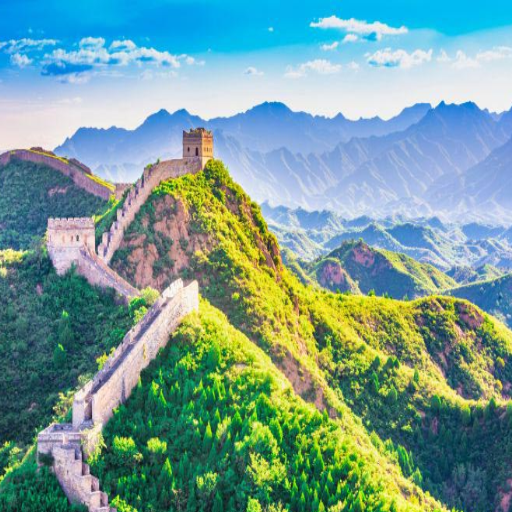
Exploring the Mutianyu Great Wall
The Mutianyu section of the Great Wall is one of the best-preserved and arguably the most picturesque parts of the landmark. Mutianyu has both historical and natural significance. It borders pristine forests and rolling hills, enhancing the wall experience for many visitors. The wall in this area has magnificent watchtowers, protected stonework, and intricate architecture, all of which have survived the test of time.
Unlike Badaling, this section is less populated, so that visitors can enjoy a more immersive experience. It has various access options for families with young children, including a cable car and a toboggan. For the aesthetically inclined and hikers, the restored stairs reward one with stunning panoramic countryside views. Mudianyu is approximately 1.5 Hours away by car from Beijing, which is ideal for a day trip. Along with restaurants, souvenir shops, and other forms of transport, tourists and aesthetically-savvy visitors of all ages have the optimum rest while exploring.
The Historic Badaling Section
Renowned for its beauty and well-preserved architecture, the Badaling section of the Great Wall is one of the most visited sections of the Great Wall of China. It is located approximately thirty to seventy kilometers away from Beijing, making it easy to reach for both foreign travelers and locals in China. Initially built in the Ming Dynasty, Badaling was used for military purposes to defend against invasions. The Great Wall must have been an architectural wonder of ancient China, considering the tremendous effort put into its construction.
In contrast to the other portions of the Great Wall, this section of Badaling is famed for its well-maintained roads and other developments, which make exploration much easier for visitors. Those who visit Badaling are treated to some of the best sights around due to the peak height of the surrounding mountains, sitting at around 1000 meters, and during autumn, when purple and golden foliage blanket the hills. Like other tourist sites, Badaling is also equipped with several modern facilities such as visitor centers, cable cars, and shuttle buses to increase accessibility for travelers with disabilities. The combination of Badaling's rich historical significance, stunning views, and modern amenities makes it one of the best places for international travelers to visit in China, and it certainly does justice to the majestic Great Wall of China.
Planning a Great Wall Hiking Adventure
Optimal Timing: Breathtaking views of the Great Wall can be accessed by walking from April to May (spring) and September to October (autumn). The weather during either of these periods is complementary, alongside the view. As it stands, China experiences blue skies, mild temperatures, and exuberant seasonal flowers in spring, whereas fall wields vibrant autumn colors. Winters can be slightly bothersome, with some parts of the wall icy. Summers seem to be popular-kids-on-the-block hot in terms of weather and crowds, making it relatively less entertaining.
Choosing the Right Segment: Enthusiastic trekkers have half a dozen options for choosing their segments to hike, given that the Great Wall stretches across China. For ‘easy on the legs’ walkers, Mutianyu is a spectacular option which boasts well-restored pathways alongside impressive panoramic views. Badaling lies on the other side of the spectrum and is a Petri dish for families and kids, a definitive hall of the Great Wall of China with streamlined, effortless walks and modern amenities. Rugged Jiankou is more suited for hiker crazy folks as it comes loaded with rough, uncrowded, wild, and challenging terrains.
Packing Essentials for Your Adventure: Packing the right gear is vital to ensure a safe and enjoyable experience. The ability to propel oneself up a mountain or slow-crawl over rocks without aid requires well-fitting hiking boots. Troops marching into battle bring water rations, sunscreen, and signal hats—capstone multipurpose headgear that serves protective purposes. Pack a lightweight surge bag with consumables aplenty, a first aid kit, and a poncho to be prudent and prepared for exigent circumstances.
Staying Safe and Respectful: Upholding safety procedures while navigating the culturally rich and historically significant sites requires great care when hiking the Great Wall. Roaming ancient structures or any untamed wilderness has its fair share of hazards; staying on carved and well-tread paths alleviates roughly 60% of the risk. Caution is to be exercised in physically demanding places, especially on loose or steep mid-restoration parts. In addition, preserving this UNESCO World Heritage Site necessitates a ‘leave no trace’ policy concerning waste disposal.
What Makes Private Beijing Tours Special?
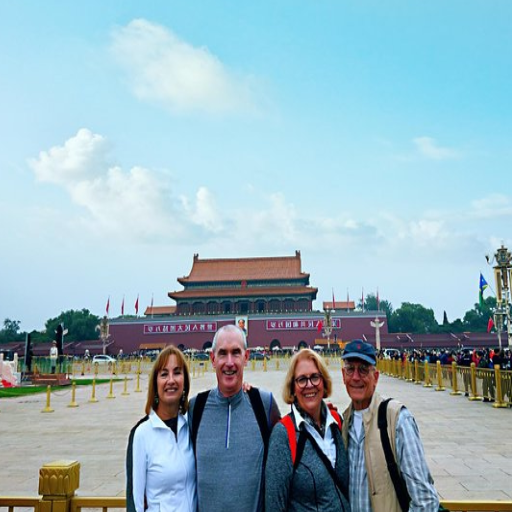
Tailored Itinerary for Personalized Experiences
Arranging private tours in Beijing ensures a traveler's unique interests and hobbies are met. These tours are done on a ‘one-on-one’ basis, thus creating a custom-tailored tour. These tours focus on historical sites like the Forbidden City and Temple of Heaven, or food markets in Beijing. Private tours guarantee maximum customer satisfaction. Every private tour is aimed at being as multifaceted as possible. The customized itinerary is flexible, making it easy for the customers to focus on the attractions they want to see during the trip.
Moreover, the private tour deals that offer customized private tours give users enough flexibility to enjoy their vacation in a planned manner without much hassle. This flexibility allows the customers to avoid holiday traffic and enjoy their time with family. An experienced tour guide enables the customers to enjoy landmark sightseeing sessions and learn modern and historical relevant facts about the landmarks through the eyes of a local expert. For example, while on a trip to the Summer Palace, customers are told stories from the official family history and lavish their eyes on the imperial family’s Qing Dynasty castle. During the tour through the hutongs, you will be told amazing things about how people lived in Rome during its golden age. Customers enjoy the best of both worlds: educational materials, rest, and many adventures.
Their flexibility is what makes these tours unique. We cater to private tours for all perspectives, whether for an individual, a couple, or a group. We incorporate everything from family-friendly activities to luxurious experiences. All private tours are designed around the group dynamics. Transportation, fine dining, and everything else are included and designed to enhance your visit so that you can explore the beauty of Beijing without any stress.
Exploring China's Imperial Past with a Private Guide
Traveling through Beijing reveals an absolute gateway into China’s imperial realms; doing so with a private guide takes it a notch higher as exploring the landmarks becomes truly memorable. A private guide customizes the account around the glory of the Ming and Qing dynasties, sharing much more than dates and cultural insights. Start your journey at the Forbidden City, a magnificent sprawling world’s palace complex that has functioned for centuries as China’s ceremonial and political heart. Gaze into the majestic staircase complex and listen to the rich history of refined emperors, their numerous concubines, and other court members who shaped a nation.
Move on to the Temple of Heaven, where the emperors performed sacred rituals to attain good fortune on earth and maintain balance. The commanding guides will certainly highlight much of the spirituality of this great UNESCO World Heritage Site, including its commanding circles oriented structures that represent the heavens. Proceed to the Summer Palace, a stunning imperial retreat famed for the grandeur of its lakes and gardens. Your guide will explain the eye-catching features of the palace, including Chinese landscape architecture, and its use by emperors as a retreat.
With the assistance of your private guide, you will be provided with a customized blend of context and intricate details. Set against the backdrop of Beijing’s vibrant and multifaceted history, your journey is transformed into a rich conversation that enables you to marvel at the cultural relics of one of the world’s oldest civilizations.
What are the Must-See Attractions on a Beijing Day Tour?
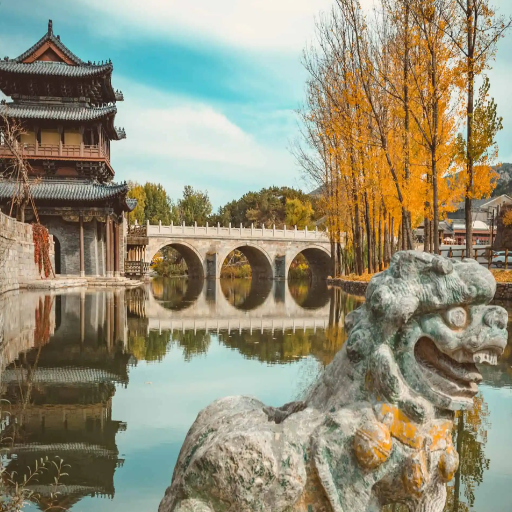
The Iconic Forbidden City and Tiananmen Square
The Forbidden City and Tiananmen Square hold historical significance and mark the qualities a traveler must know about in Beijing. The Forbidden City is a UNESCO World Heritage site and is a prominent example of Chinese culture. The Forbidden City served as the residence for 24 emperors of China in the Ming Dynasty, alongside the Qing dynasty’s rule. Capturing Chinese worlds of art, the City marks a haven for over 1,000 exquisitely crafted buildings alongside housing priceless historical gems. Emperors Soaring their rule over the land have resulted in extravagant structures which stand today—with the Hall of Supreme Harmony and the Palace of Heavenly Purity being the finest examples.
Tiananmen Square complements the significance of the Palace with its charm and serves as a city landmark. Distinct by being one of the largest of its kind, the Square marks extensive historical resonance and a platform for deep-rooted national sentiment and emblems registering high significance within Chinese history and its people. The Bharat Heroes Memorial and the Great Hall of People accompany the Square, making it the perfect complement to the Forbidden City. It enables him to foster a unified perception of China's historical power dynasty, surmised alongside shifts within Chinese sociopolitical culture.
Discovering the Tranquil Summer Palace
Located in Beijing, the Summer Palace is renowned for its exquisite features of Chinese horticulture and palace architecture. Also known as Yiheyuan, or Garden of Preserving Harmony, it was included in UNESCO's World Heritage list and occupies a surface area of around 742 acres. The Summer Palace was built in 1750 during the Qing dynasty as a resort for emperors to escape the summer heat and enjoy nature in peace. The layout of the palace and its gardens dominated by ‘Longevity Hill’ and ‘Kunming Lake’ demonstrates the effectiveness of Chinese feng shui as it skillfully incorporates prominent natural features with human-made ones.
While moving through the estate, tourists can appreciate the beauty of Kunming Lake, which takes up almost three-quarters of the estate and allows for relaxing boat rides, increasing the tranquility of the environment. Guests can also walk over 2,000-foot-long fresco-covered walkways, commonly known as The Long Corridor, and enjoy the intricately decorated pavilions and bridges constructed around the palace. Apart from its remarkable beauty, the Summer Palace represents the millennia of history and culture in China as it reflects the lavish life of the imperial family.
Visiting the Sacred Temple of Heaven
As a symbol of the intertwining of heaven and earth, and a work of art from the Ming and Qing dynasties’ period, the Temple of Heaven was constructed in the central region of Beijing in the year 1420. Religious worship was conducted during this period, and as a result, the complex and its area are more than that of the Forbidden City, which is now 2.7 million square meters. It involved reshaping the whole of the eastern city of Beijing. It comprises three parts, the Imperial vault of heaven, the Hall of Prayer for Good Harvests, and the Circular Mound Altar, all of which already indicate the depth of respect for cosmology and China’s traditional philosophy.
One of the most distinguishable floors in China is the Hall of Prayer for Good Harvests. It includes richly decorated and precisely aligned to cardinal directions the triple-gabled roof, and the Imperial Vault of Heaven. Every emperor would pray on the circular structure at the center for a bountiful harvest. It was a richly decorated place. Nine rings of stones are placed above and below a staircase and circular enclosure with nine steps, both symbols of heaven. All of these together make the Circular Mound Altar, which not only expands the region of China but also gets rid of the mark of tomb-like structures from China. Surrounding the complex, they add to the stillness of the area with cypress tree groves, making the area even more beautiful. These contribute to stunning visuals and provide a serene feeling as they are considered sacred.
The Temple of Heaven is a UNESCO World Heritage Site and a major tourist attraction. During morning passes, witness the locals and tourists practicing tai chi, leisurely walking through the temple gardens, or playing traditional instruments. The Temple of Heaven must be on your itinerary when traveling to Beijing because of its profound history, magnificent architecture, and natural beauty.
How to Make the Most of Your Walking Tour in Beijing?

Navigating the Traditional Hutong Alleys
Walking through the well-known Hutong alleyways of Beijing, I always begin by taking in the surroundings. The narratives they hold come to life with every step I take, so I take my time to stroll, admiring the details of the ancient courtyard homes and the intricate doors carved with deep meaning. Almost all of these areas have been maintained for hundreds of years, and going through them is like traveling back in time. I make sure to stop at local stores and old-fashioned tea shops as I embark on this journey, as they have stories begging to be unearthed.
I discovered that participating in a guided Hutong tour further enhances the experience. Guides usually tell stories about the lives of the imperial families, scholars, and ordinary people who lived in these alleys, which helps me appreciate the spirit of old Beijing. It is also critical to pay attention to famous places in the city, like the Bell and Drum Towers, because these landmarks offer a stunning view of the city and provide historical context.
Finally, I ensure that my walking explorations include sampling local street food from the Hutongs. Tasting authentic Jianbing pancakes or sweet sesame treats with my collection of acquaintances completes my cultural adventure. That said, walking through the Hutongs is not simply a matter of navigating the alleyways; it is an immersion into Beijing's living and breathing history.
Experiencing a Food Tour in Beijing
Beijing food tours allow me to experience the city's blend of culture and modernity while enjoying the city’s culinary offerings. One of my favorite dishes is Peking duck. The lavish duck treatment by adorned chefs as they methodically slice off the crisp skin and tender meat takes center stage and is truly something special. The dish is served with thin pancakes, sweet bean sauce, and scallions, which highlights the creativity in the culinary feats of Beijing. Zhajiangmian is another favorite of mine, and I enjoy piping hot with thick chewy noodles, soybean paste, and vegetables for toppings. Each visit not only stimulates the taste buds but also offers a glimpse into some of the histories of the people and city through the food.
Aside from the main constituents, I enjoy digging into the city's street food to the maximum. Each narrow alley smells of grilled skewers, steamed dumplings, and piping hot Jianbing. Eating this food enhances my appreciation for Beijing because every vendor has their take on the dishes. Moreover, sweet foods such as Tanghulu, which are hawthorn sweets on skewers, complement the savory offerings perfectly. Eating my way through Beijing food tours is, for me, more than just indulging. It encompasses sight, smell, taste, and even sound as the bustling markets provide a symphonic backdrop.
A sense of discovery and connection makes these tours memorable. Hearing passionate chefs and vendors tell their stories and cheese histories makes me appreciate Beijing’s already vibrant food culture even more. Enjoying these dishes wherever they are, renowned restaurants or scaling down-market stalls, is by all means an ode to culinary artistry and heritage. For me, every bite beckons me to unravel Beijing’s culture.
Enjoying a Night Tour of Beijing's Landmarks
Beijing's landmarks at night truly leave one spellbound, as the experience differs drastically from daytime visits. The city transforms into an illuminated spectacle, merging ancient charm with modern vibrancy. Strolling around Tiananmen Square, I am captivated by the wisdom behind the construction of the towering Monument to the People's Heroes. Perusing the Forbidden City closely after, exudes a more mysterious and elegant fusion of traditional architecture, and an ethereal presence with subtle golden lights. These landmarks enlighten my appreciation of the city, making it much richer than its contemporaneous whirs engraved in history a millennia strands of culture revered.
Equally beguiling is my nighttime walk around the Temple of Heaven. It's a surreal calm coupled with strategic lighting that is something straight out of an optical illusion, complementing the temple's offerings. Taking a gander around the park during this hour offers a wonder. Another place worth visiting at night is the Great Wall of China. Most certainly an experience of a lifetime. Loosely lit sections, such as Badaling, attune one with nature, as they breathe in the view of the softened sky.
Lastly, modern Beijing presents itself remarkably in places like the Central Business District and Sanlitun. The crowning of neon-lit skyscrapers over ancient architectural sites exemplifies the city’s vibrant growth. Every night tour, be it seeing the energetic bustle of the hutongs or observing the vividly colorful Olympic Bird's Nest Stadium, allows tourists and locals alike to experience the beauty of Beijing. For me, the experience of the city by night allowed me to embrace the rich spirit of the city further.
Frequently Asked Questions (FAQs)
Q: What are the benefits of preferring private tours in Beijing?
A: Beijing private tours allow you to customize your experience. With a private guide, you will have flexible scheduling and enjoy detailed knowledge and intimate exploration of the city's major attractions and hidden gems.
Q: How can I optimize my visit to the Great Wall of China?
A: To optimize your experience, consider booking a Great Wall tour with a cable car, as stunning views are absent from most other vantage points. Make sure it is a full-day tour that includes the Great Wall at Badaling. Private tours tend to give context to the places, explain the history, and avoid crowded spaces.
Q: What are the key places during the visit to Beijing?
A: Key places to visit are Tiananmen Square, the Forbidden City, the Great Wall of China, the Summer Palace, and the Lama Temple. All of these should be incorporated into the Beijing tour to guarantee a balanced experience.
Q: Is it possible to book activities in Beijing during the stopover?
A: A stopover in Beijing is a fantastic chance to go sightseeing. Numerous private tours have layover options and allow you to quickly visit places such as the Great Wall or old Beijing with its courtyards.
Q: Any suggested Beijing mini group tours?
A: Mini group tours are highly effective if you want to combine the social and personal aspects. These value-for-money tours are cheaper than private tours and encompass all the major attractions.
Q: What undiscovered places are there around Beijing?
A: Besides the famous places, you can also check out the lesser-known lovely hutongs, see Jingshan Park and the entire city from a new angle, or the less popular sections of the Great Wall. These places can help you experience Beijing from a different perspective.
Q: What are the highlights of the full-day tour of Beijing, including the Great Wall?
A: The full-day tour includes the Great Wall of China, the Forbidden City, and Tian'anmen Square. Visitors will likely be impressed by their first glimpse of China's essence and history, and first-timers will thoroughly enjoy this excellent tour wherever they look.
Q: What must I do to have a hassle-free travel experience from Beijing Capital Airport?
A: For a hassle-free travel experience from the airport, consider looking into airport transfers and tour bookings well in advance. Most private tours provide airport cap services, making life much easier.
Q: What are the best small group Beijing tour options?
A: If you are looking for personalized attention while still being able to share the experience with a few other people, small group tours are best suited for you. These tours are taken by experienced guides who explain the history of every major attraction during the tour. The tours also include visits to the major attractions.
Q: Why should a visit to the Lama Temple be included in the itinerary for a Beijing tour?
A: The temple is one of the most vital Tibetan Buddhist temples outside of Tibet. It gives visitors a chance to step away from the city's noises. Adding it to your tour of Beijing offers an insight into the culture and a memorable experience.

